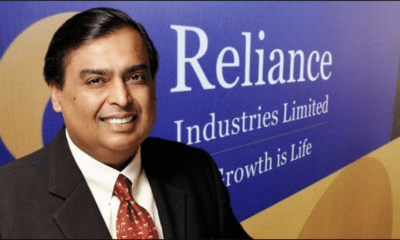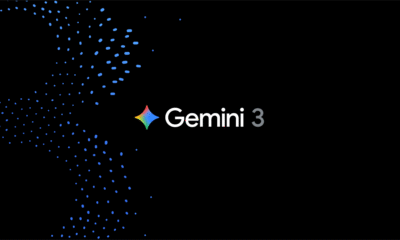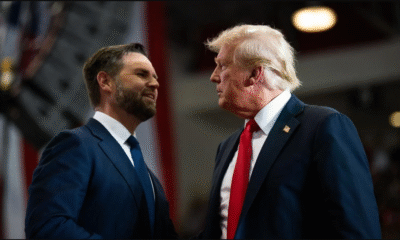Telecom
Telecom space set for 5G, to attract Rs 1.5 lakh cr investments in 2023; tariff hikes likely too
From connecting people with 5G services to lowering the cost of operations, the country’s revitalised telecom sector is witnessing the bloom of reforms, and is set to attract more than Rs 1.5 lakh crore investments to build up networks in the new year.
Once the poster boy of India’s growth story, then a debt-laden segment that saw many players withering away and now riding the wave of reforms as well as big-ticket investments, the telecom sector turned a new chapter in 2022. While the Adani group is yet to unveil its full-fledged plan for the telecom business, Reliance Industries Chairman Mukesh Ambani has committed Rs 2 lakh crore investment for rolling out a 5G network across the country by December 2023.
Also read: Tata Power raises Rs 1,000 crore through bonds
“It has been an exciting year because of the launch of 5G, a much-awaited technology for 4-5 years. This is a big step forward. We look forward to a robust rollout of 5G next year because this year is just the beginning. “We are all working on use cases. We are telling state governments, ministries, startups and innovators to come out with innovative use cases in the Indian context, which will unlock businesses and will also solve some public problems, some challenges,” Telecom Secretary K Rajaraman told PTI.
He also said the government will continue to take measures that will lower the cost of operations for telecom operators, a move that will result in higher margins for the sector, which had been reeling under a debt burden for more than a decade. Reliance Jio has committed Rs 87,946.93 crore for the spectrum that it has to pay over a period of 20 years, leaving a balance of Rs 1.12 lakh crore. While the company had invested a partial amount in building its own 5G core, it will invest the majority of the Rs 1.12 lakh in capex for 5G in 2023, according to sources.
Bharti Airtel is expected to invest in the range of Rs 27,000-28,000 crore and state-owned BSNL around Rs 16,000 crore in 2023 for rolling out an indigenously developed 4G network by TCS and C-DoT-led consortium. Later, the system will be upgraded to 5G. Together, investments worth more than Rs 1.5 lakh crore are expected in the telecom sector.
COAI Director General SP Kochhar said the structural and procedural reforms in the telecom sector approved by the government last year such as e-KYC, doing away with Spectrum Usage Charge (SUC) for spectrum acquired in a future auction, 100 per cent FDI under the automatic route as well as rationalisation of bank guarantee, Adjusted Gross Revenue (AGR), interest rates and penalties, and facilitating Right of Way (RoW) have positively impacted the sector in 2022.
Digital Infrastructure Providers Association Director General TR Dua said that most state governments have followed reforms led by the Centre and came up with telecom infrastructure-friendly policies this year. Recently, Minister of State for Telecom Devusinh Chauhan informed Parliament that telecom operators are installing on an average of 2,500 base stations per week for providing 5G services in the country and 20,980 mobile base stations were installed as of November 26.
Telecom gear majors — Nokia and Ericsson — have ramped up their manufacturing in India. The government has also received investment commitments of Rs 4,115 crore from 42 firms shortlisted under the Production Linked Incentive (PLI) scheme for making telecom gears. Nokia said it is witnessing the world’s fastest rollout of the 5G network in India. “In 2023, we hope to see continued government support in enabling the digital ecosystem to truly tap the benefits of the socio-economic applications of 5G technology. 2023 is also expected to witness wider adoption of private networks by enterprises and businesses for enhanced efficiency and security,” a Nokia India spokesperson said.
Ericsson’s MD, India & Head of Networks, Southeast Asia, Oceania and India, Nitin Bansal said that enhanced Mobile Broadband (eMBB) and Fixed Wireless Access (FWA) are expected to be the initial 5G use cases in India. This technology will help to bridge the digital divide by addressing the concern of limited fixed broadband penetration levels and improving the data experience while on the move.
Tech Mahindra President, Communications, Media and Entertainment Business, and CEO, Network Services, Manish Vyas said 5G will be used to develop revolutionary applications and innovative use cases in industries, such as manufacturing, healthcare, BFSI, and autonomous driving. “We see 5G for Enterprise (5G4E) as our next growth strategy, and we are already doing multiple pilots on it across the world,” he said. IDEMIA India, Senior Vice President, Rahul Tandon said as India ushers in 5G connectivity it opens up many new capabilities to enhance productivity and safety of not only online transactions but Machine2Machine (M2M) transactions as well.
While telecom operators are investing billions in building a 5G network, a senior Airtel official said there are no applications as of now that can help companies monetise 5G. “5G is helping in offloading traffic from the 4G network. 5G is a very efficient and better technology but at present the applications like video, gaming etc are working well on 4G. We are yet to see any applications that can specifically help in monetising 5G,” the official said. He also said the company expects growth to come from customers upgrading their service from 2G to 4G, pre-paid to post-paid and post-paid to home broadband, and tariff hikes.
The annual tariff hike by telecom operators — Bharti Airtel, Vodafone Idea and Jio — in the range of 18-42 per cent has brought the companies a sustainable level of Average Revenue Per User (ARPU) situation in 2022. Vodafone Idea Ltd had taken lead in November 2019 to raise mobile services rates by up to 42 per cent. Bharti Airtel and Reliance Jio followed VIL in raising tariffs. The tariff hike in 2019 was after a gap of about five years. The data prices had nosedived by 95 per cent to Rs 11.78 per GB in 2017 from Rs 269 per GB in 2014.
Bharti Airtel is running a pilot to increase its entry-level mobile plan by about 57 per cent. The company has increased the minimum recharge price for a 28-day mobile phone service plan by about 57 per cent to Rs 155 in Haryana and Odisha. A company official said it will take a look at the result of the tariff increase in another six weeks to decide on hiking the tariffs across India.
While VIL has been able to sail through 2022, the year 2023 is likely to be a make-or-break year for the company as the debt-ridden company awaits the government to pick around 33 per cent stake under the scheme to convert interest dues into equity. A note by JM Financial in October 2021 said that VIL will need to have an APRU of at least Rs 190-200 by March 2023 to survive but the company is far from the mark and is struggling to check subscriber churn.










































Pingback: Covid: MoCA issues revised guidelines for arriving intl passengers from six countries